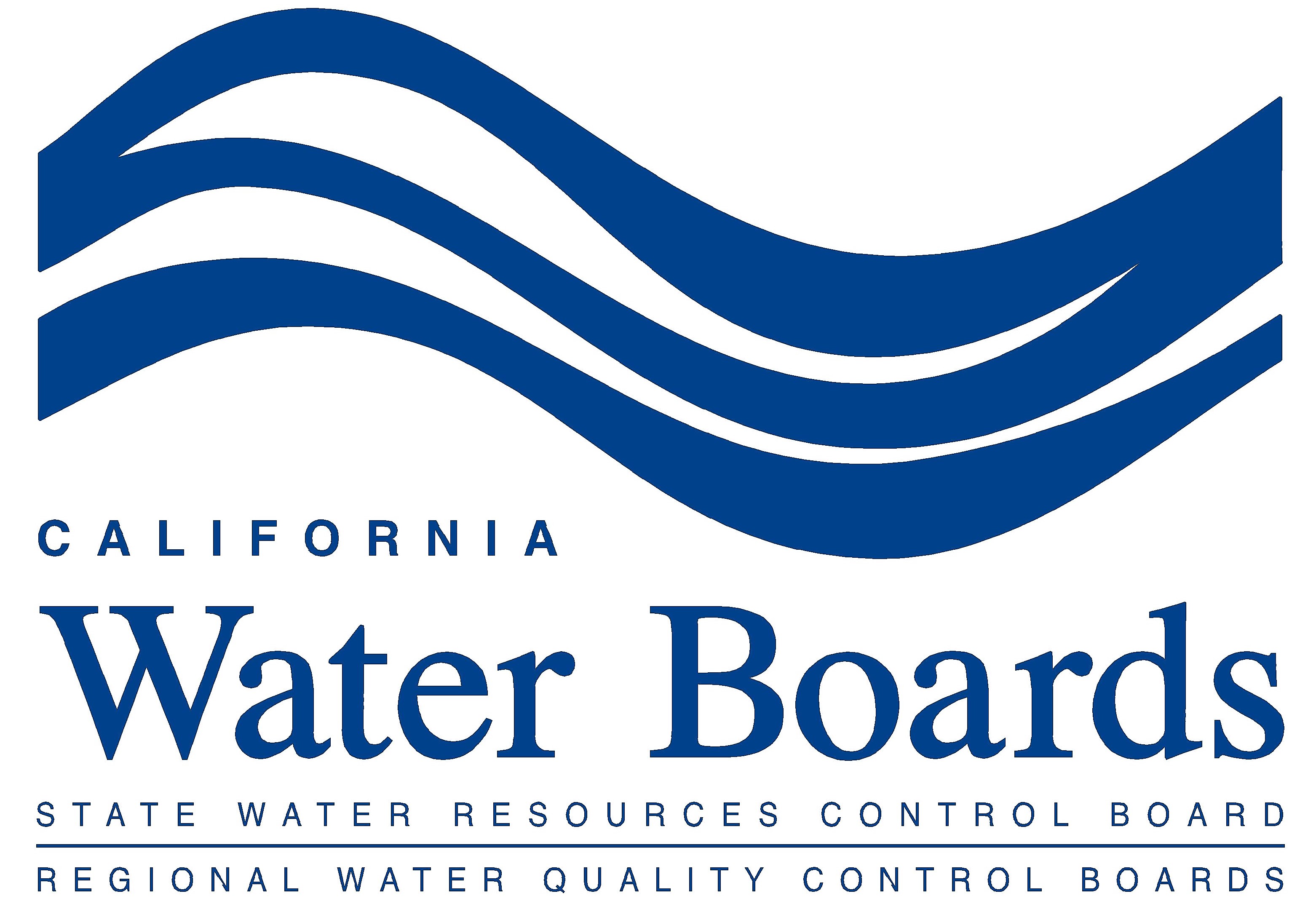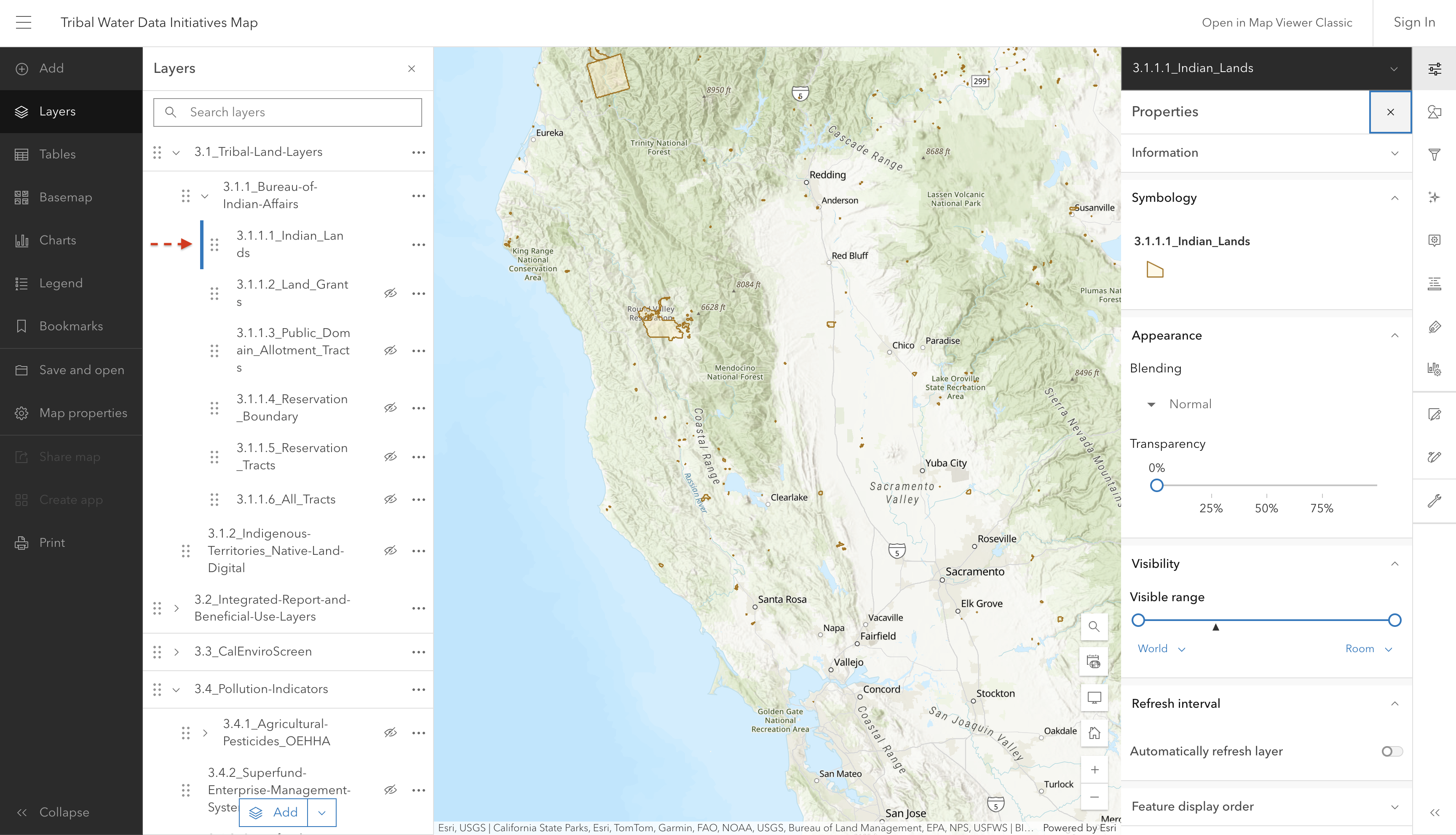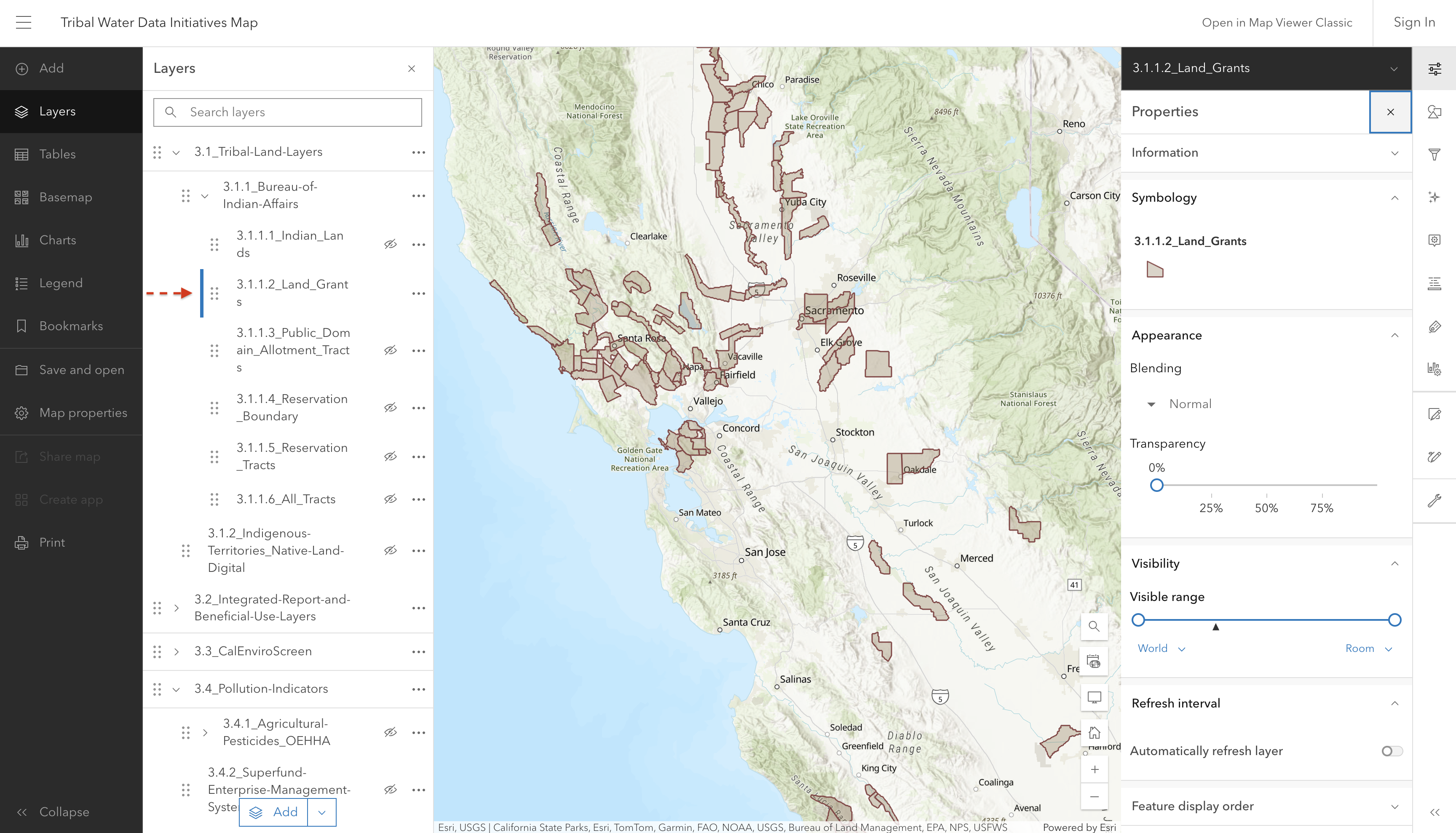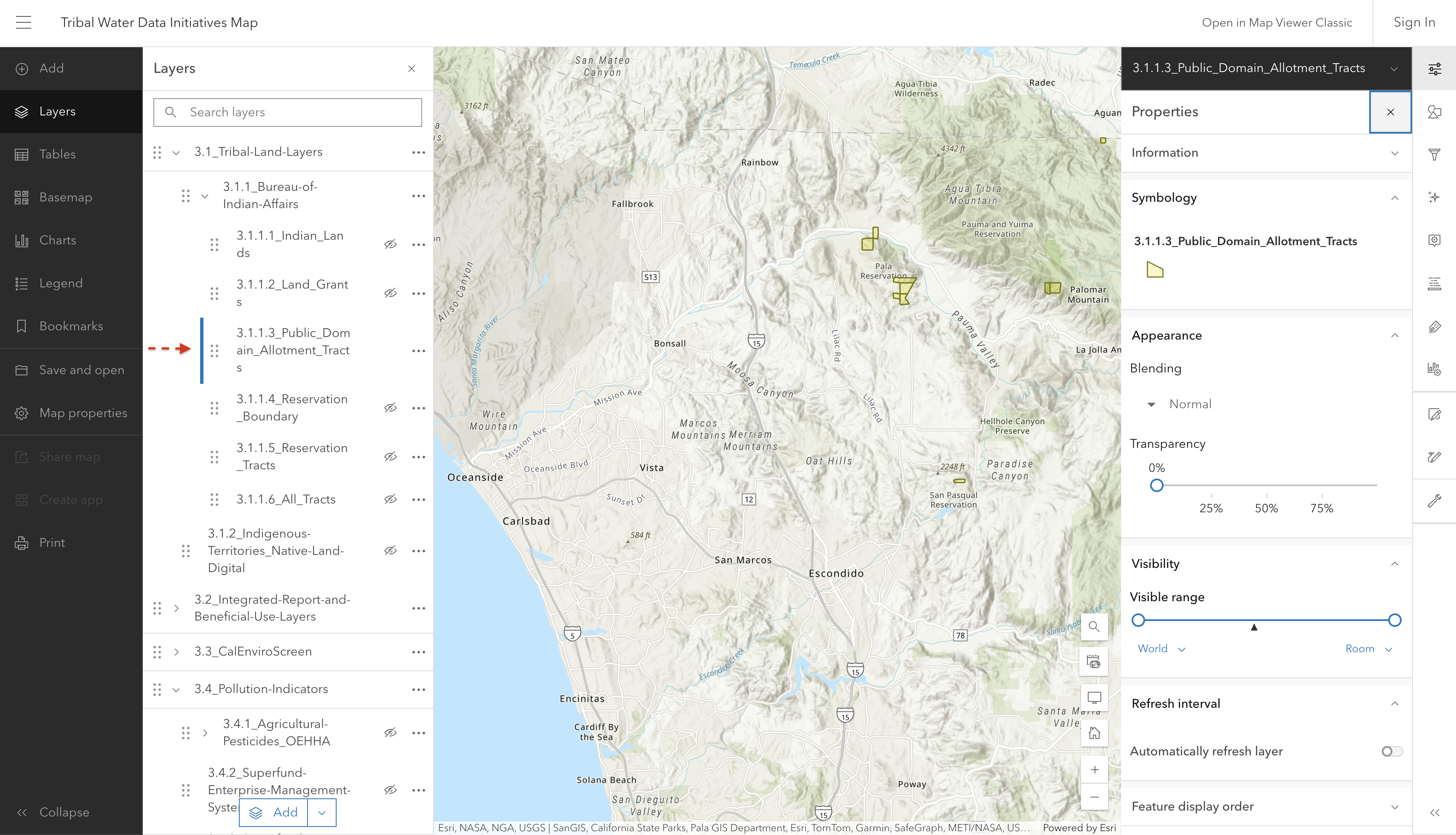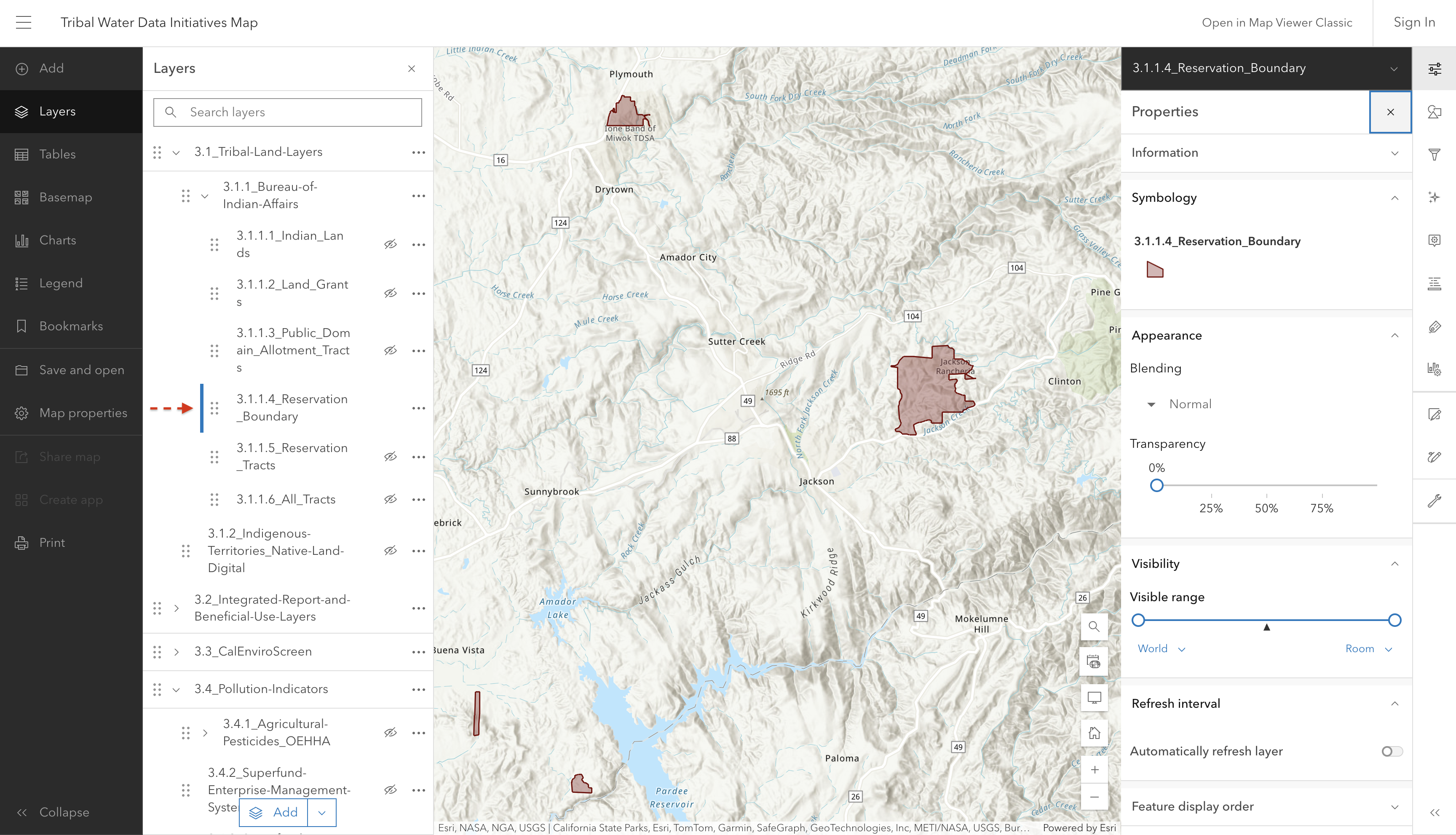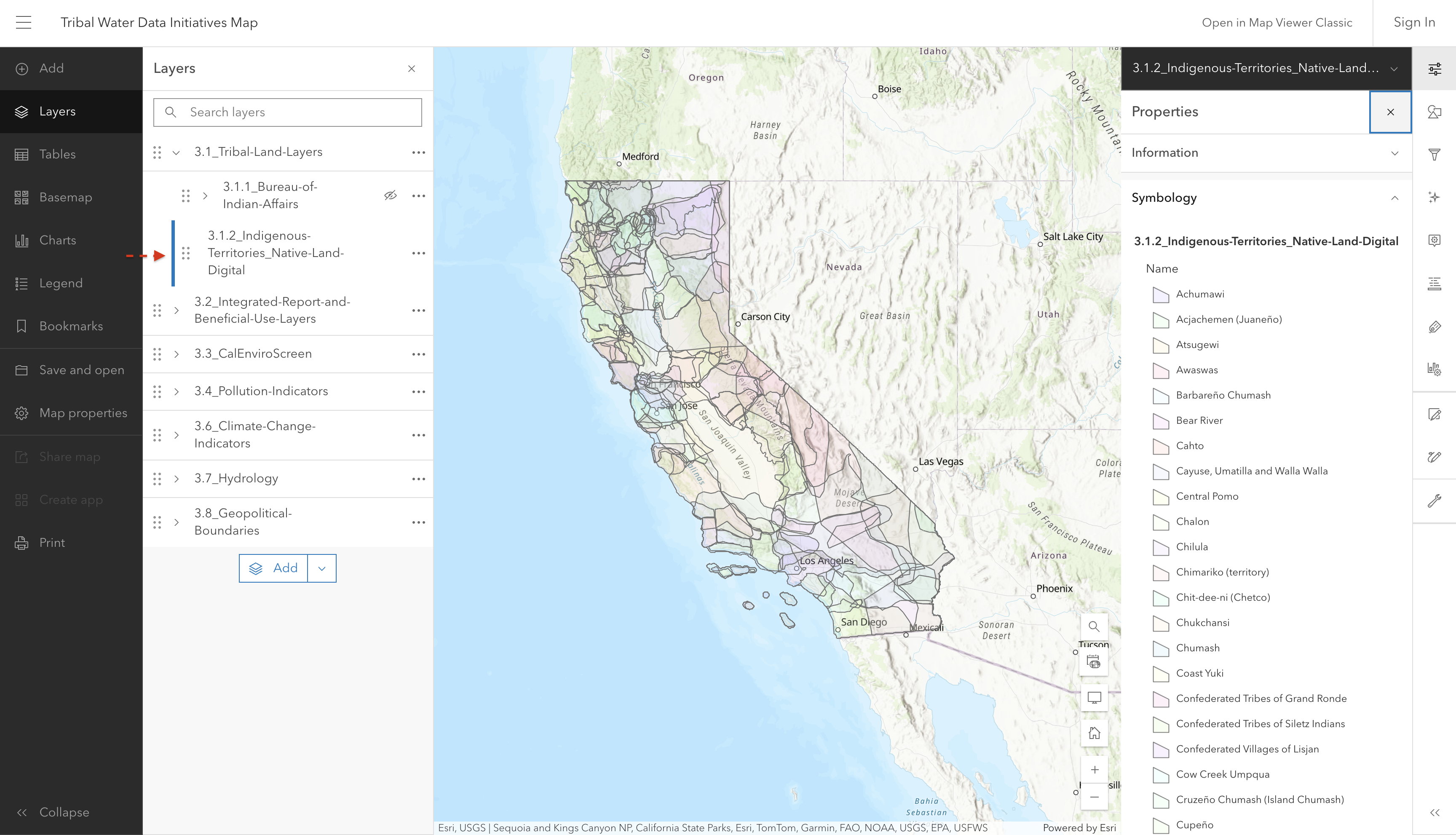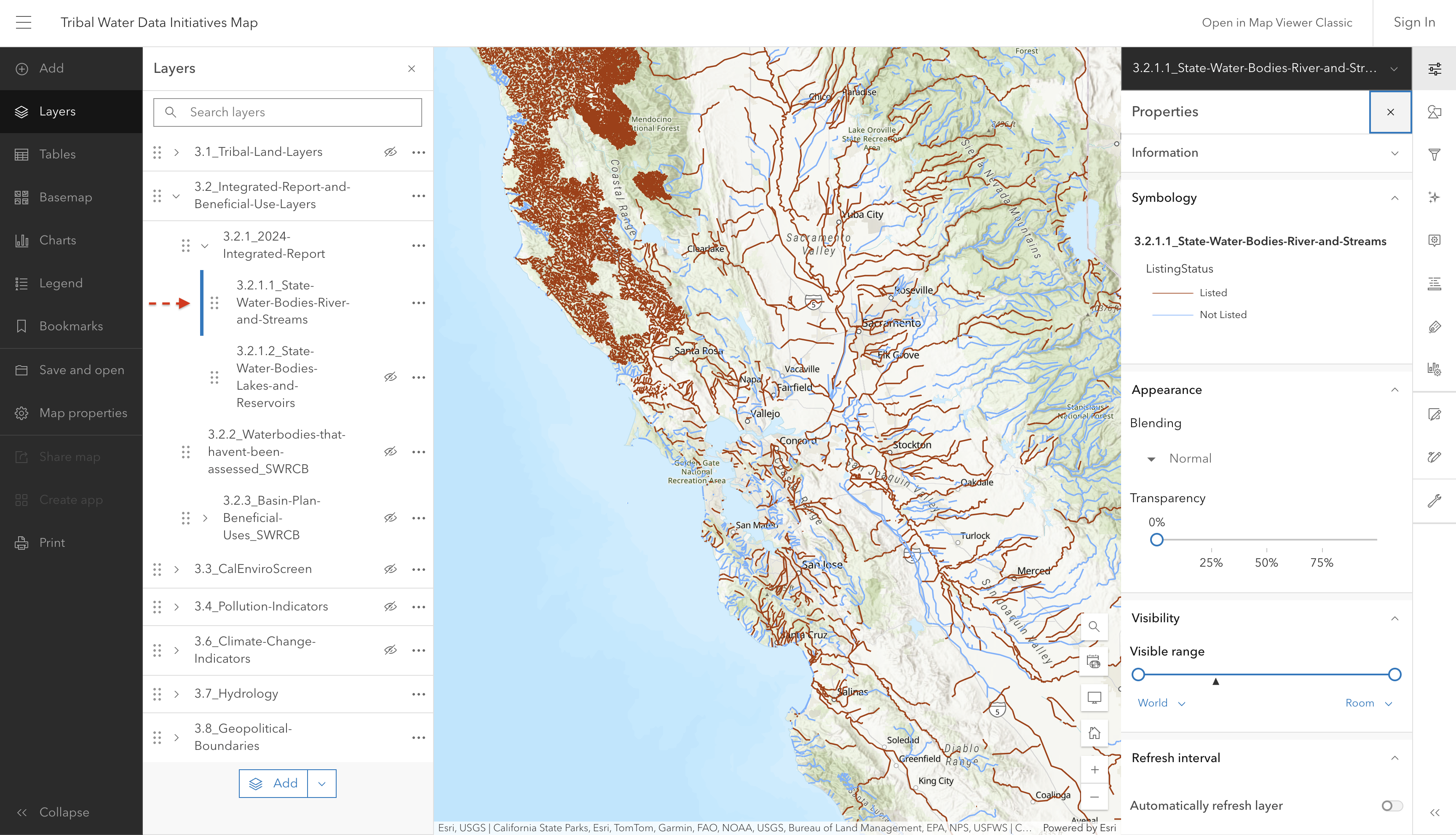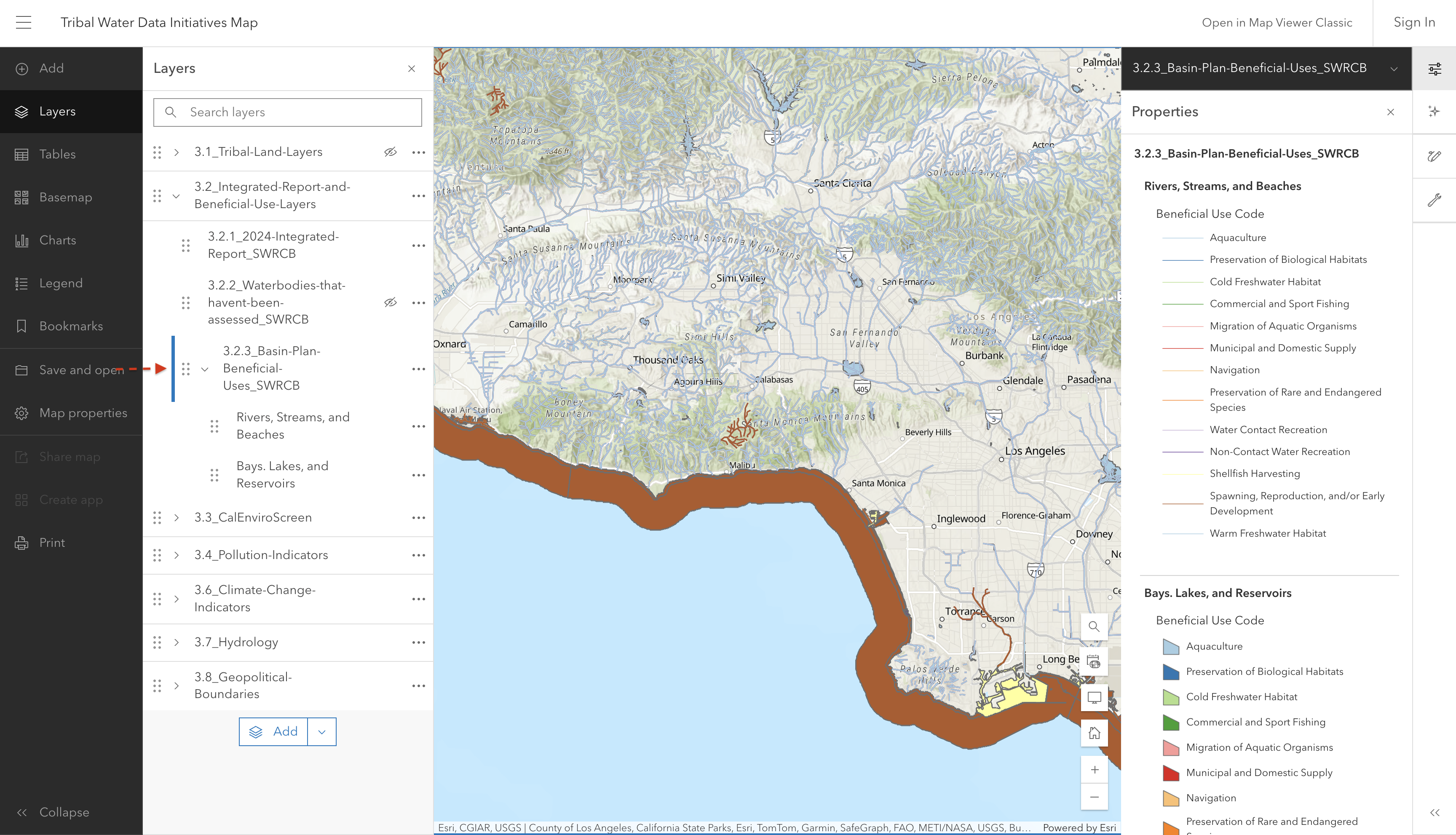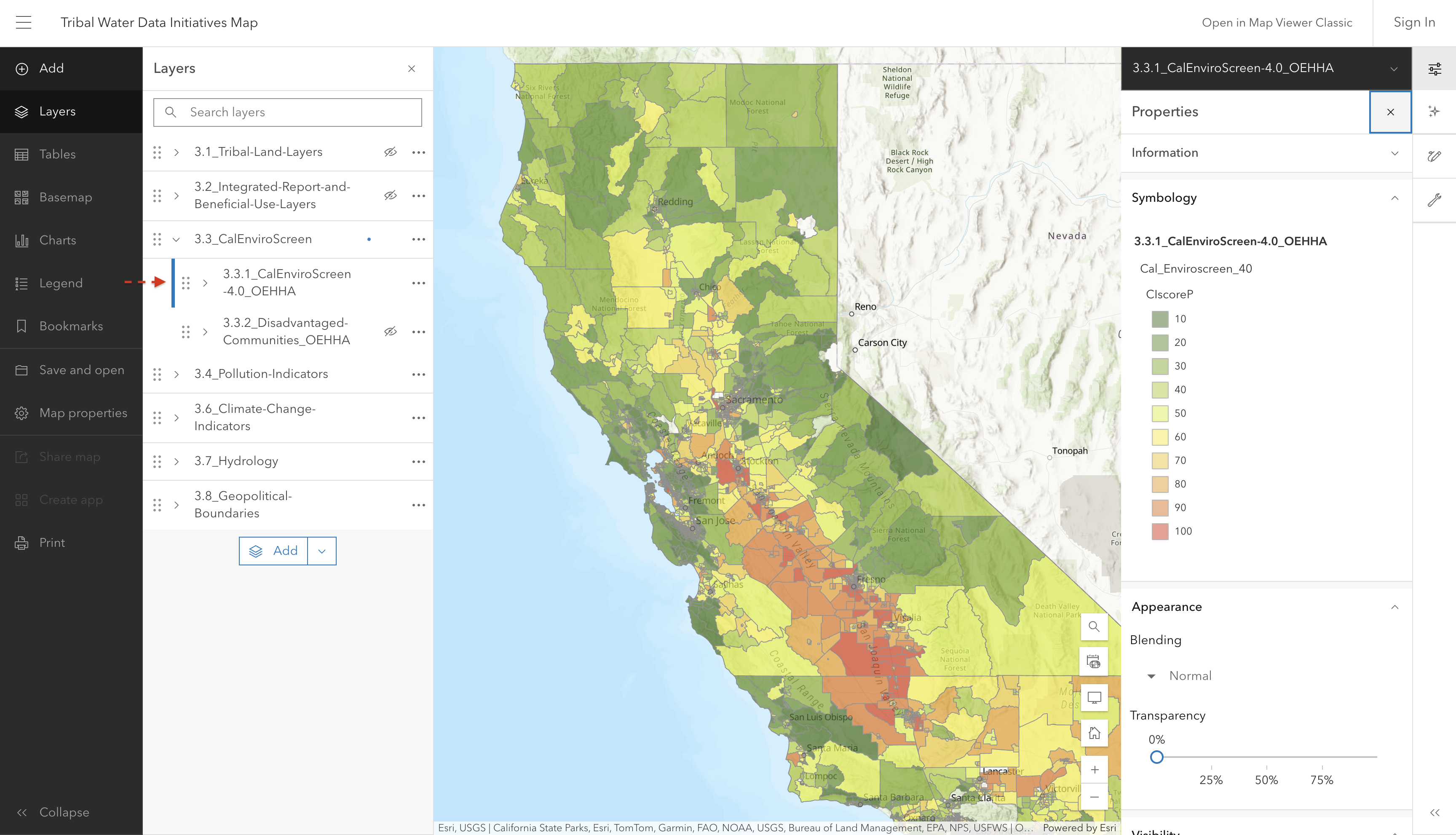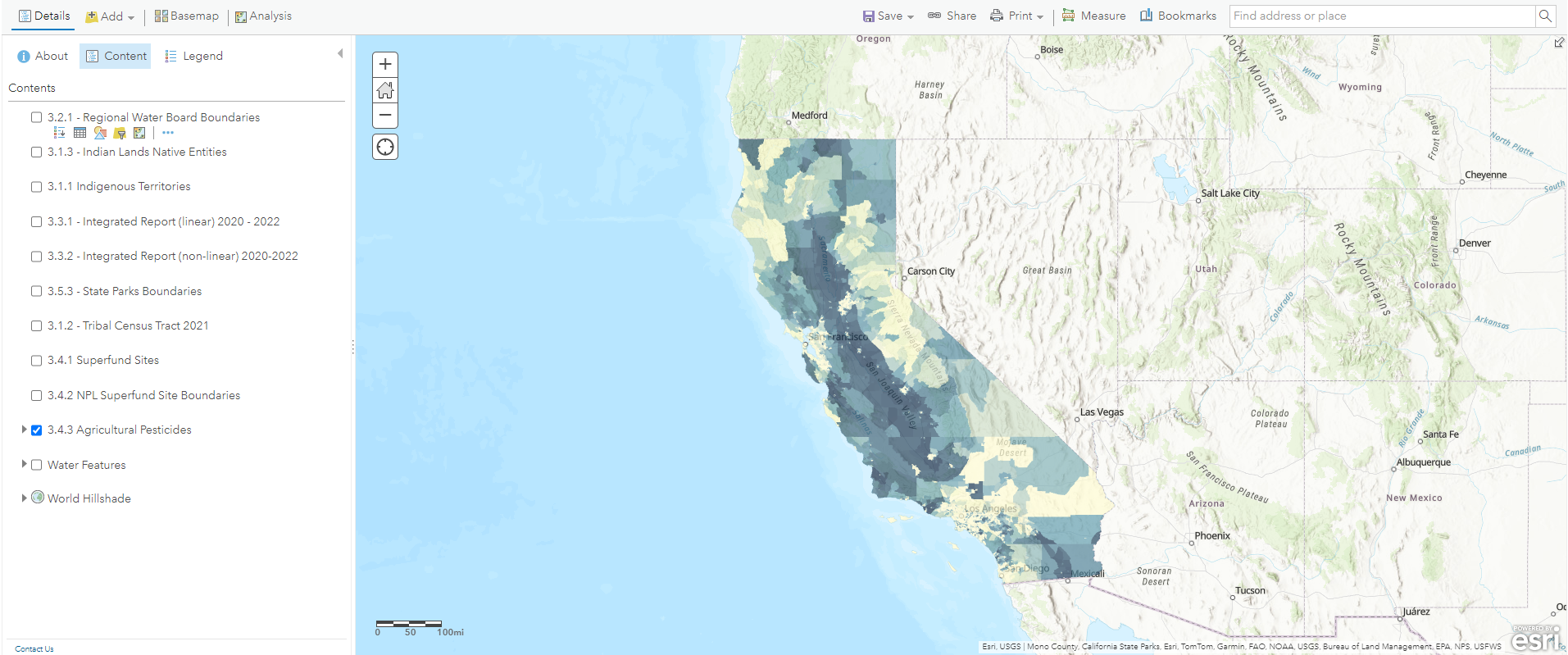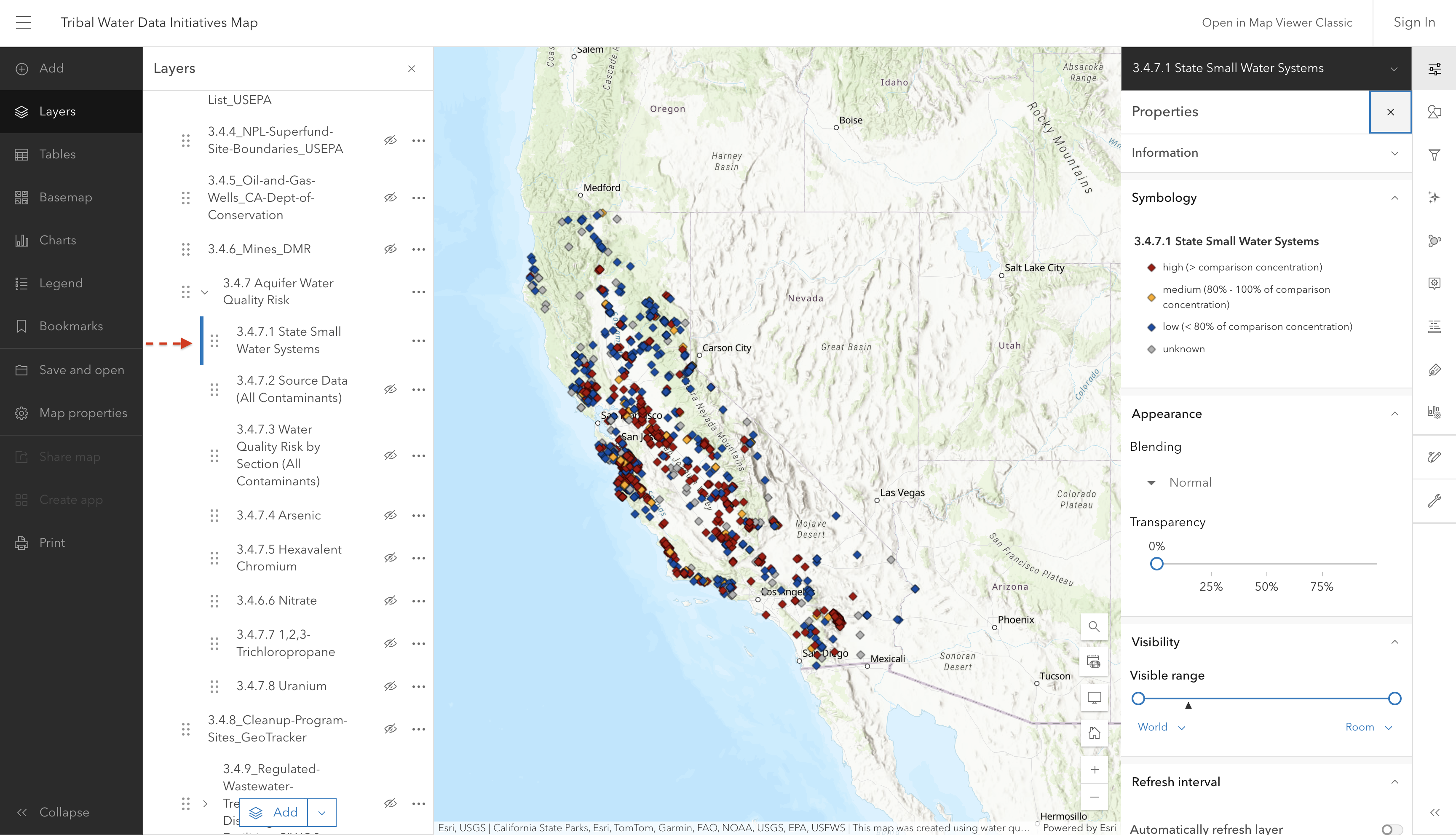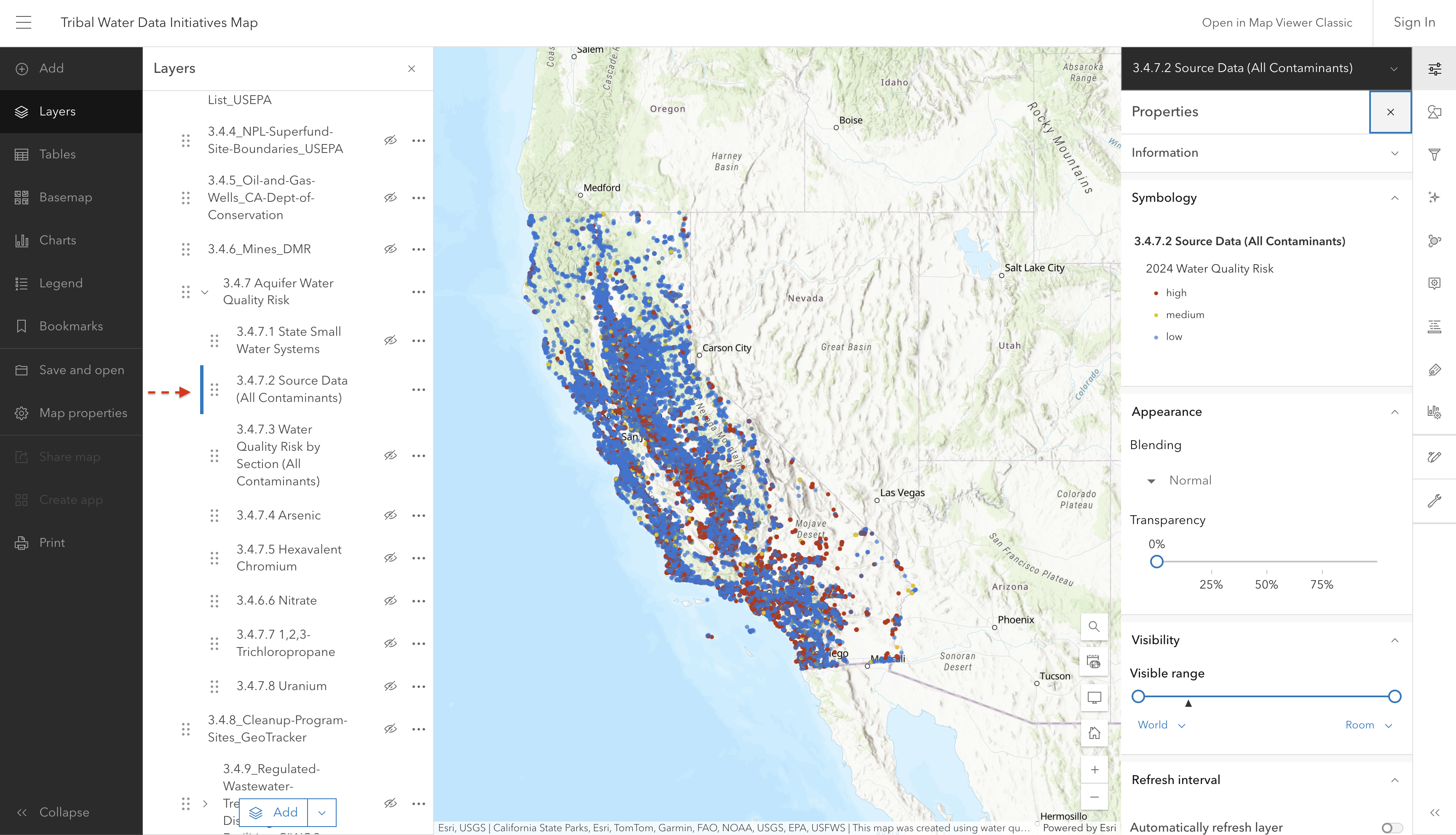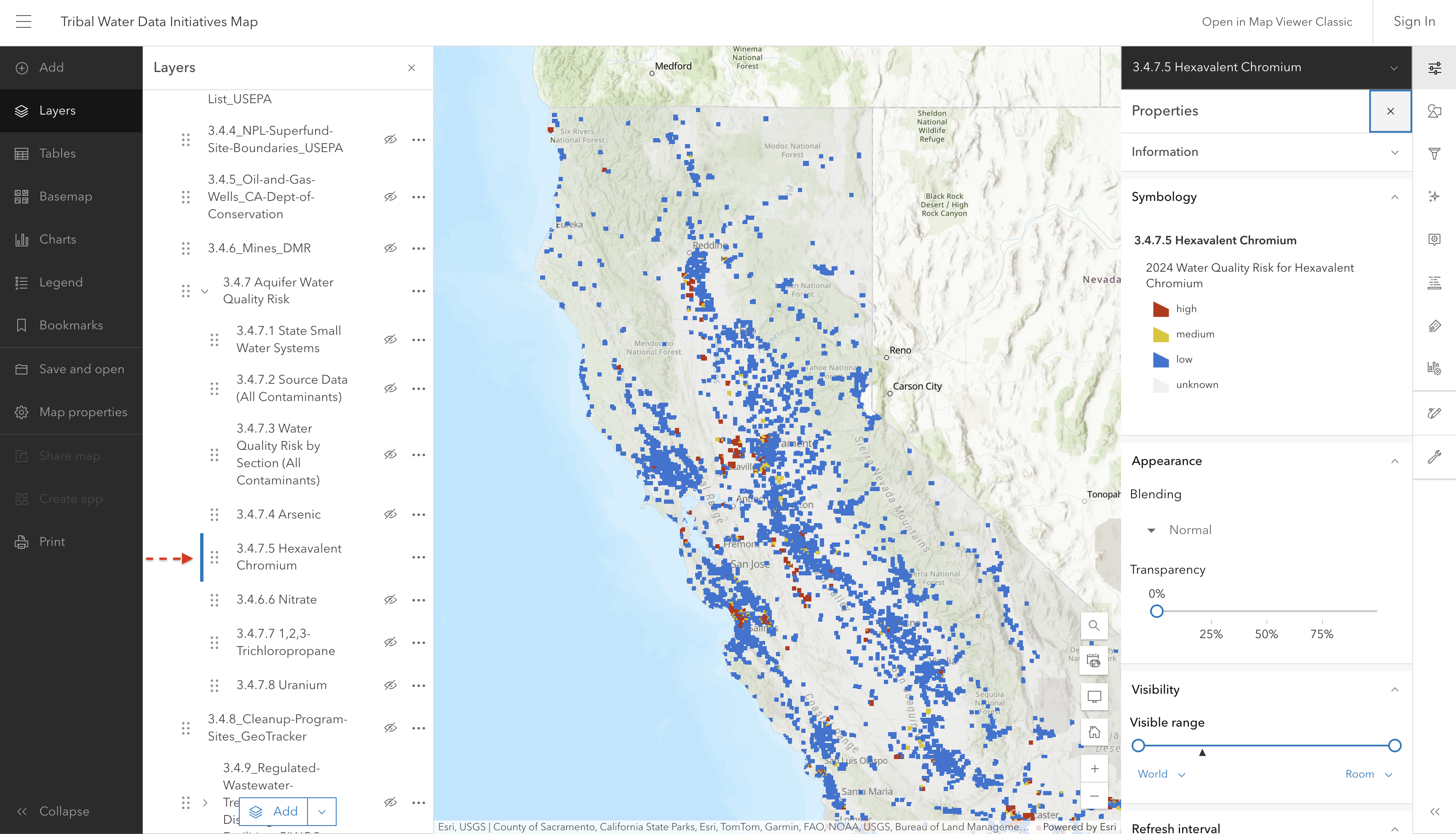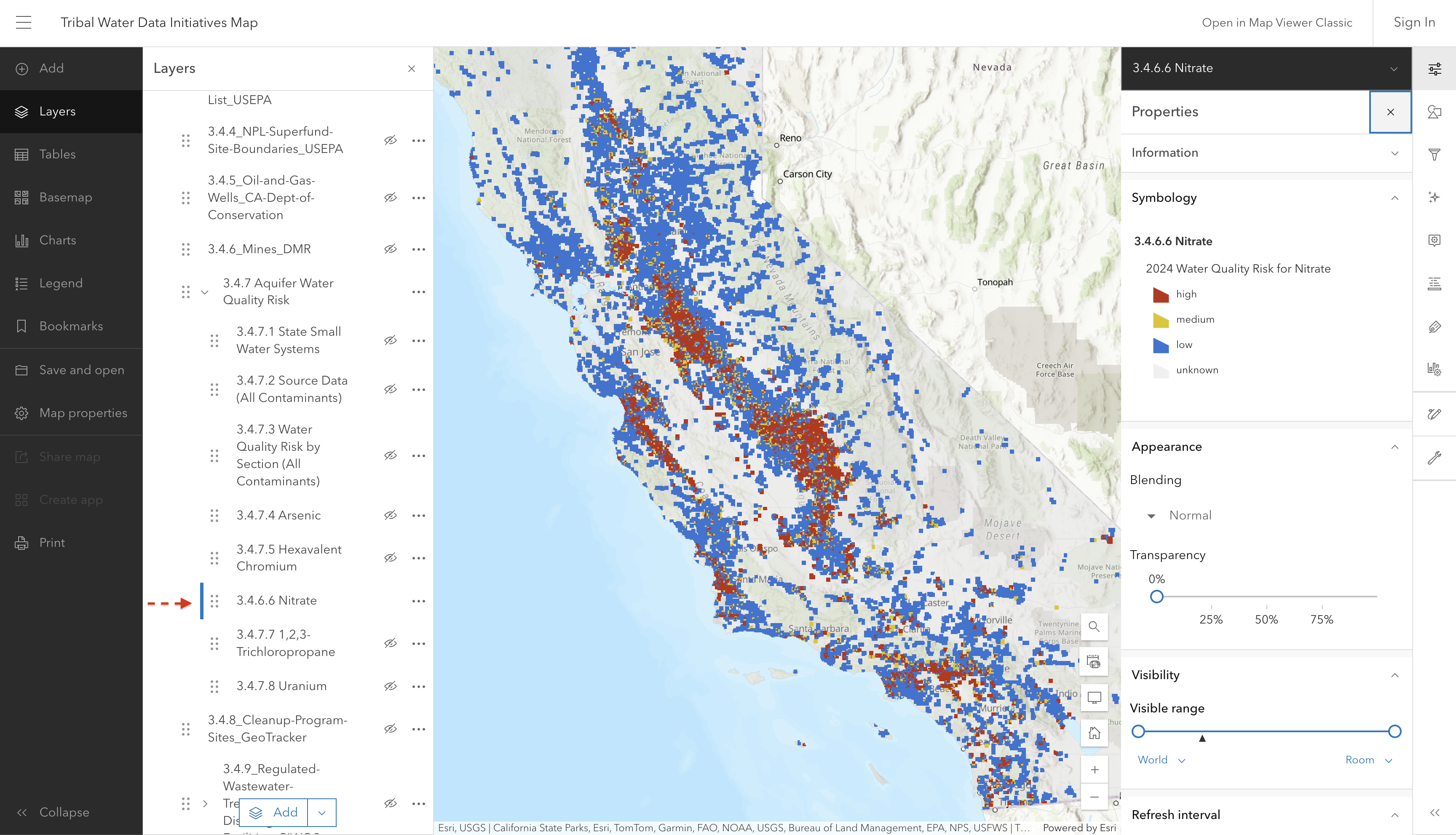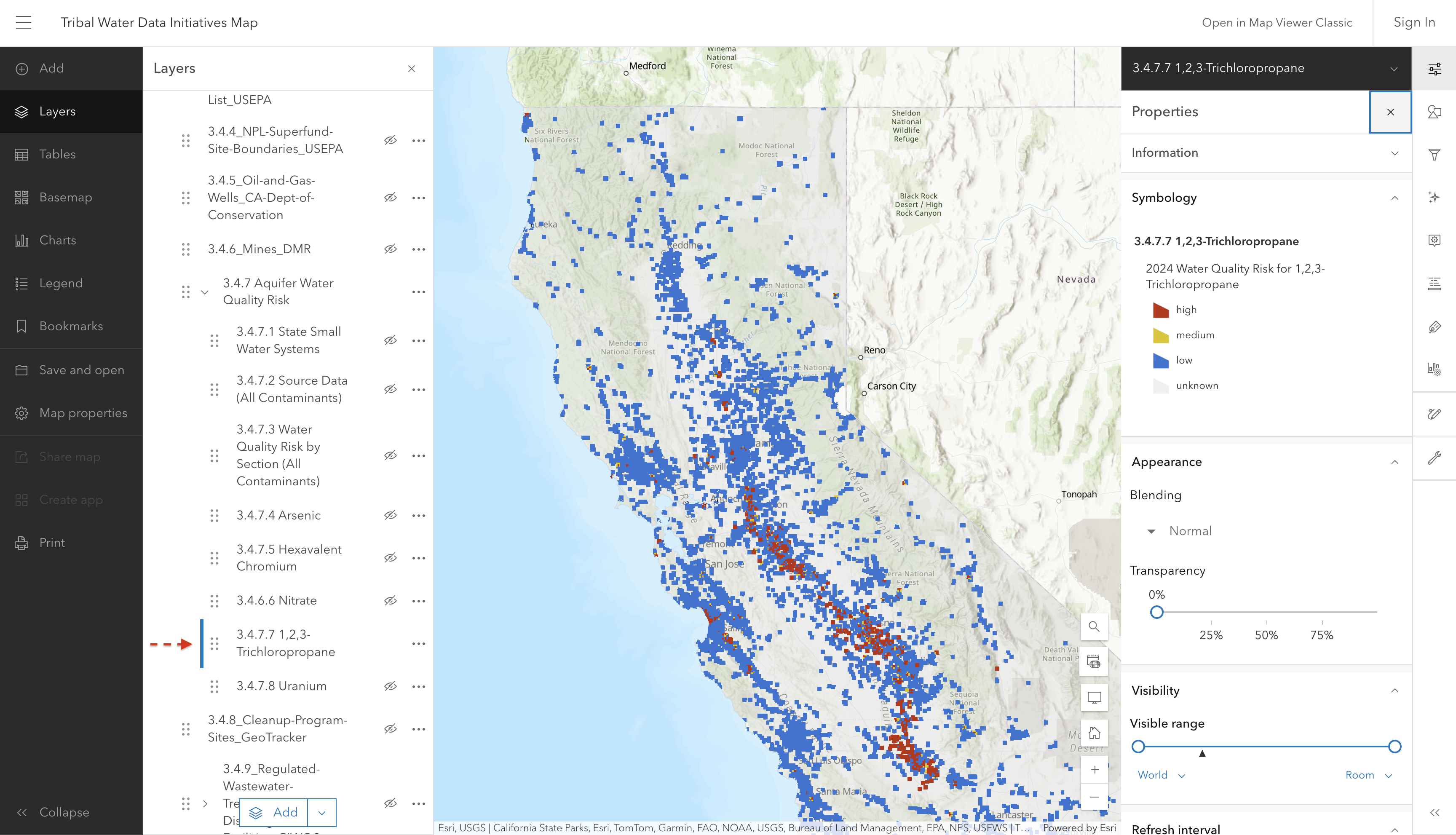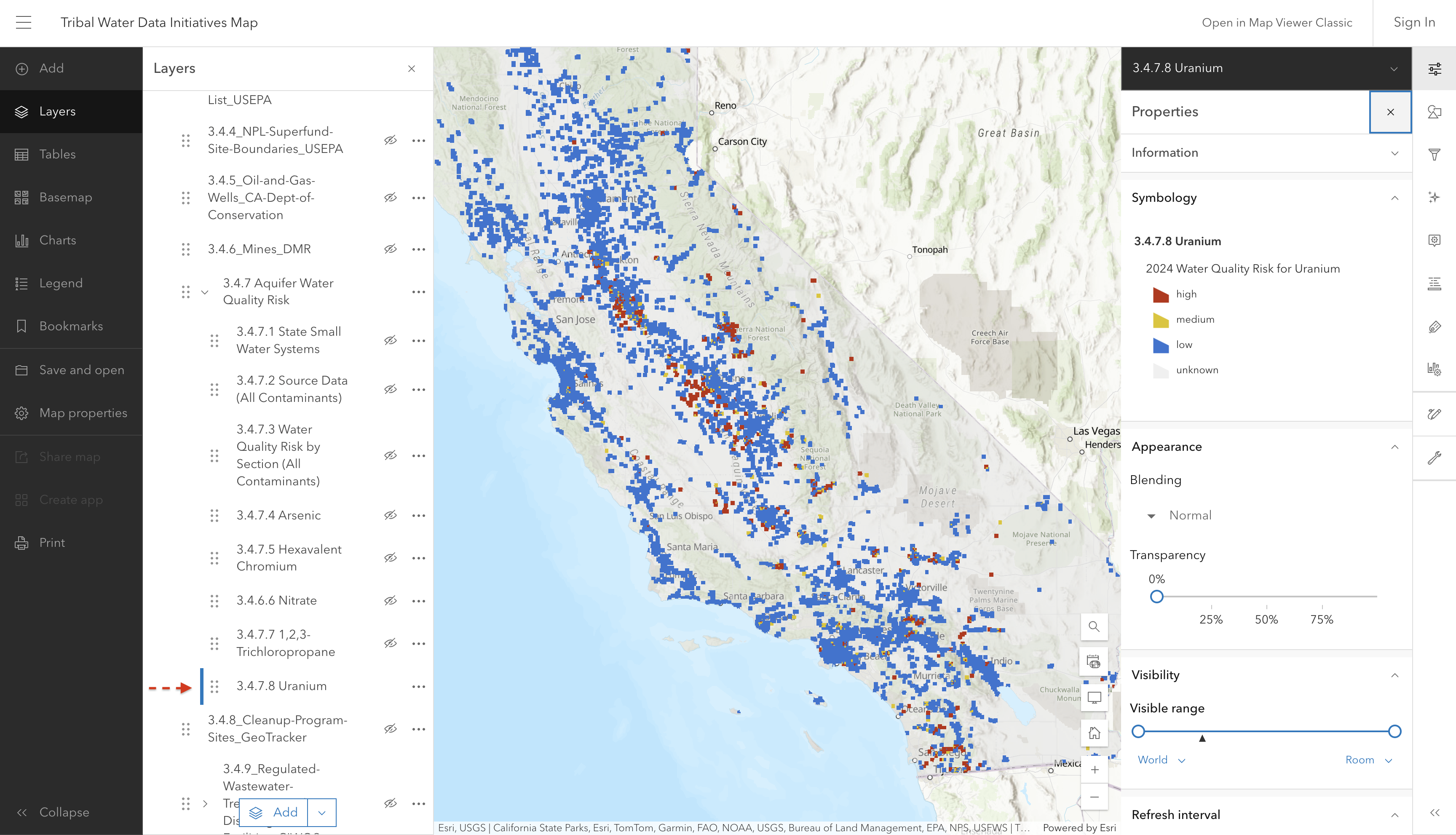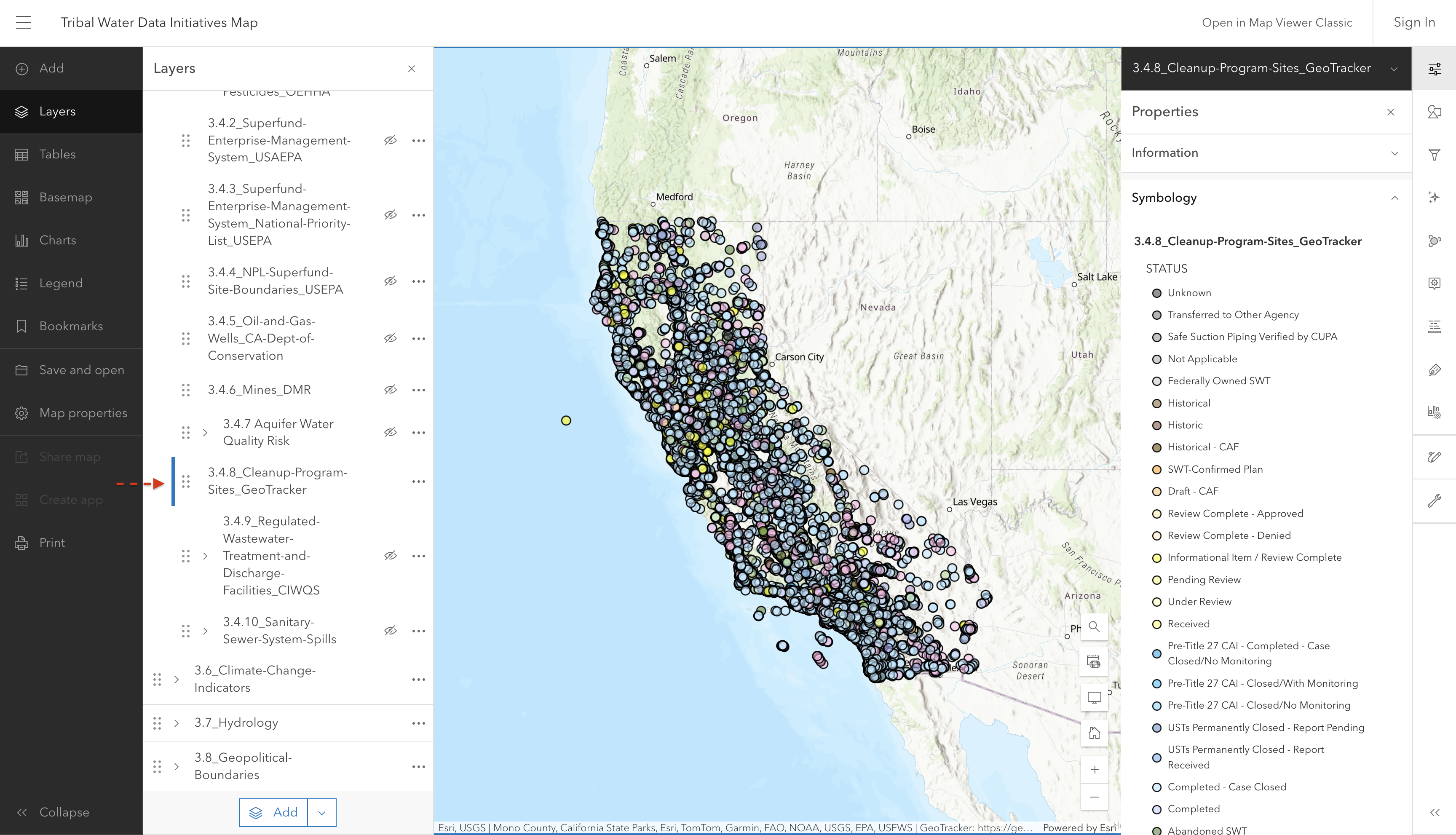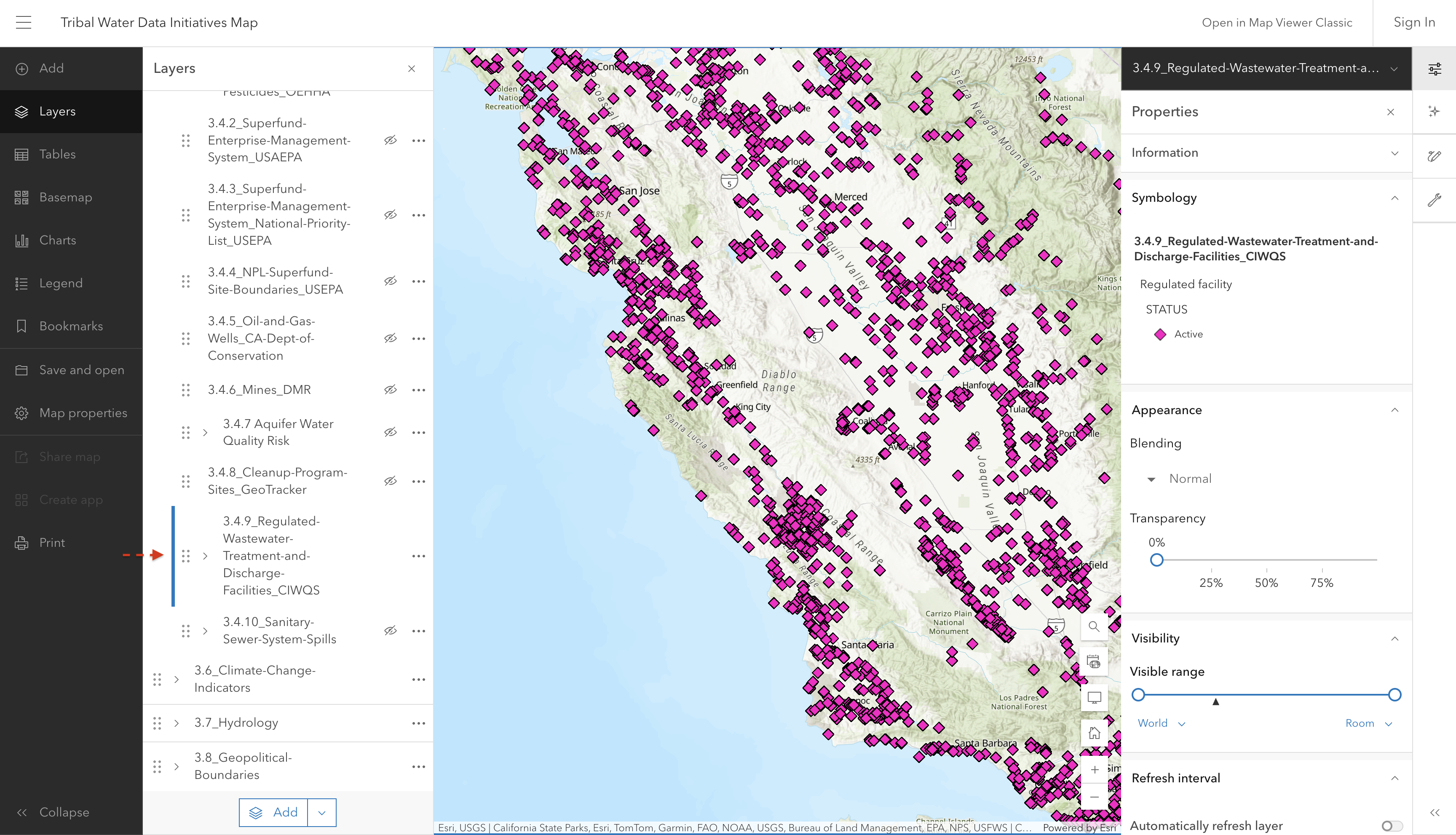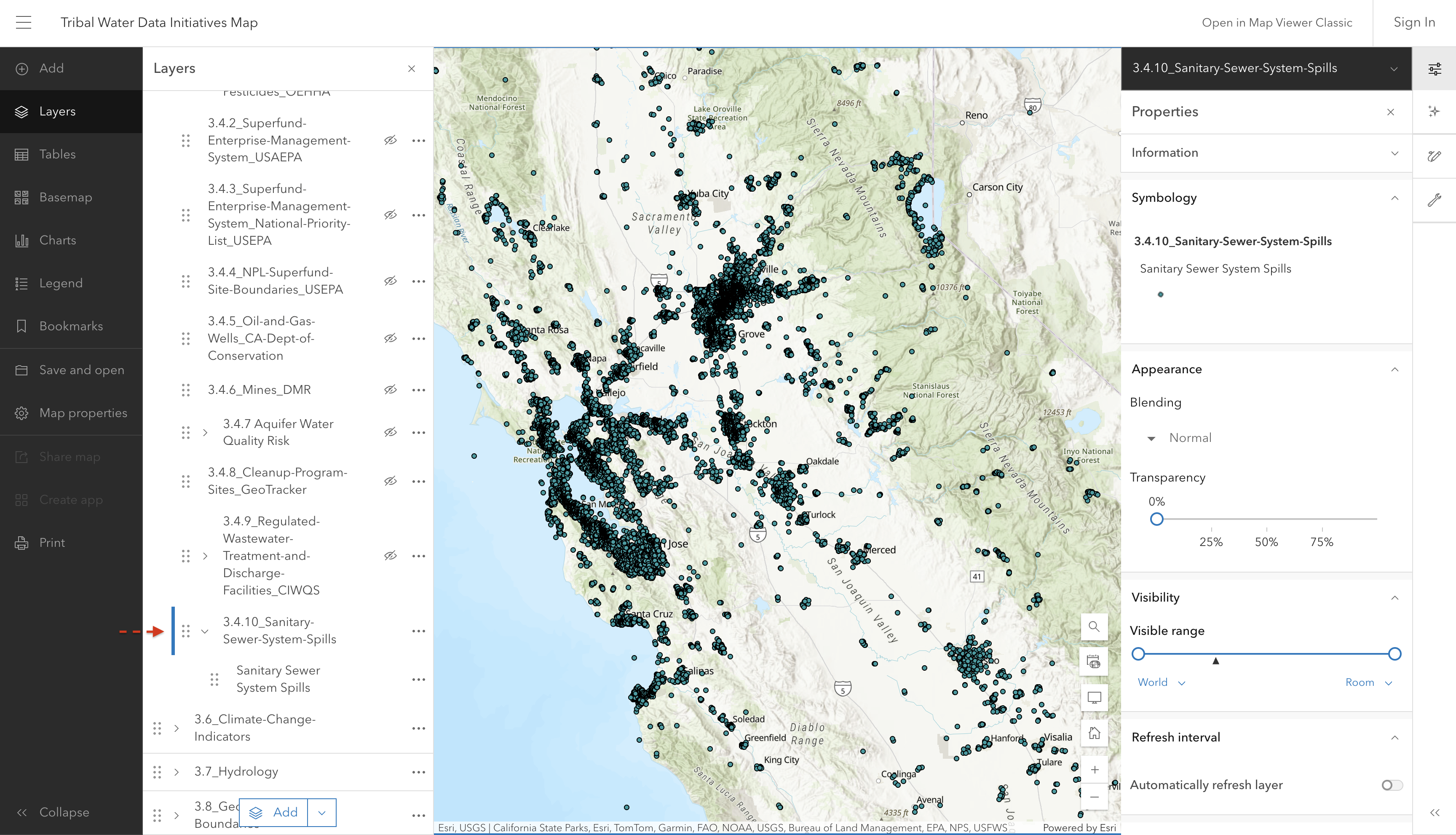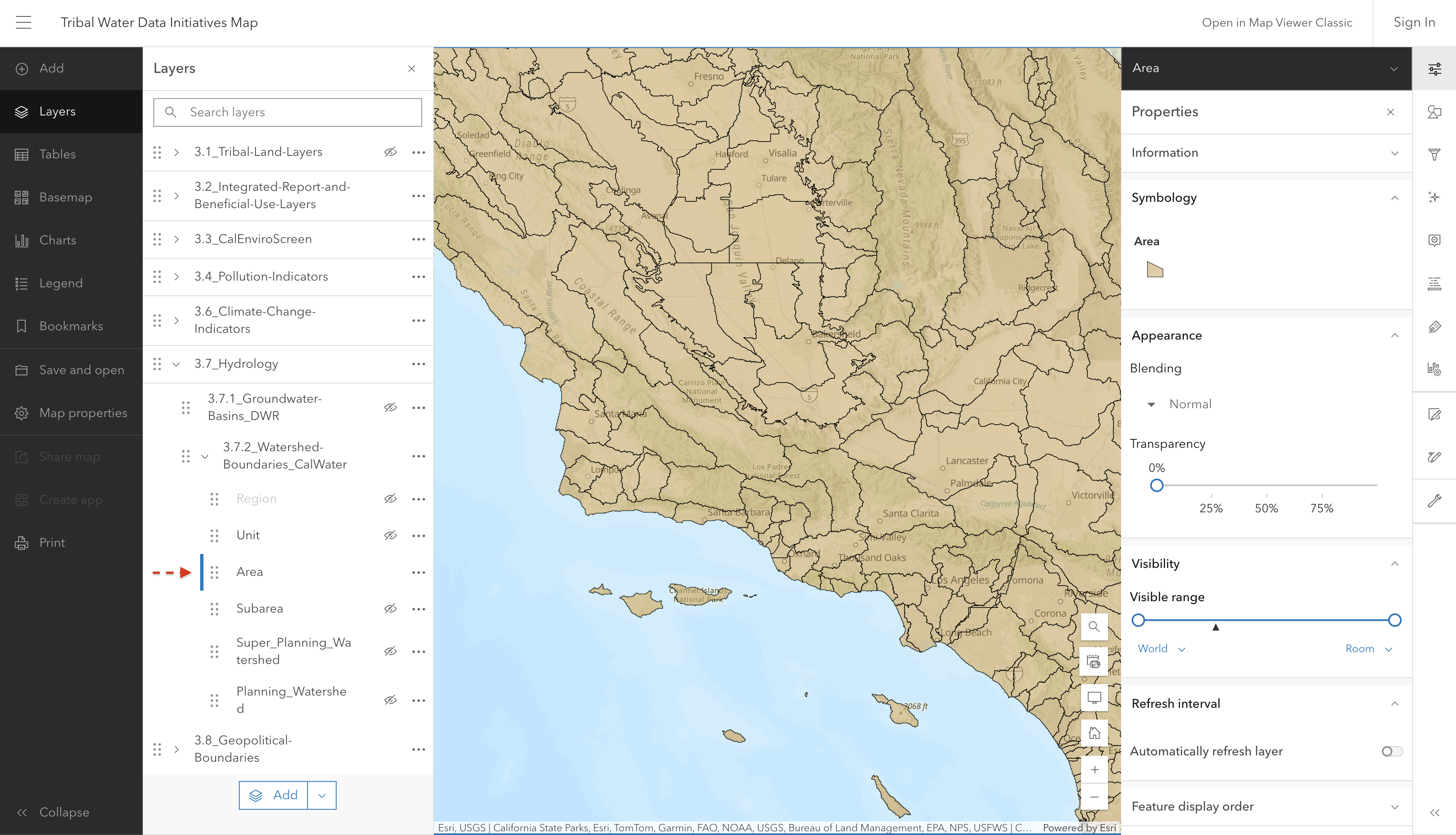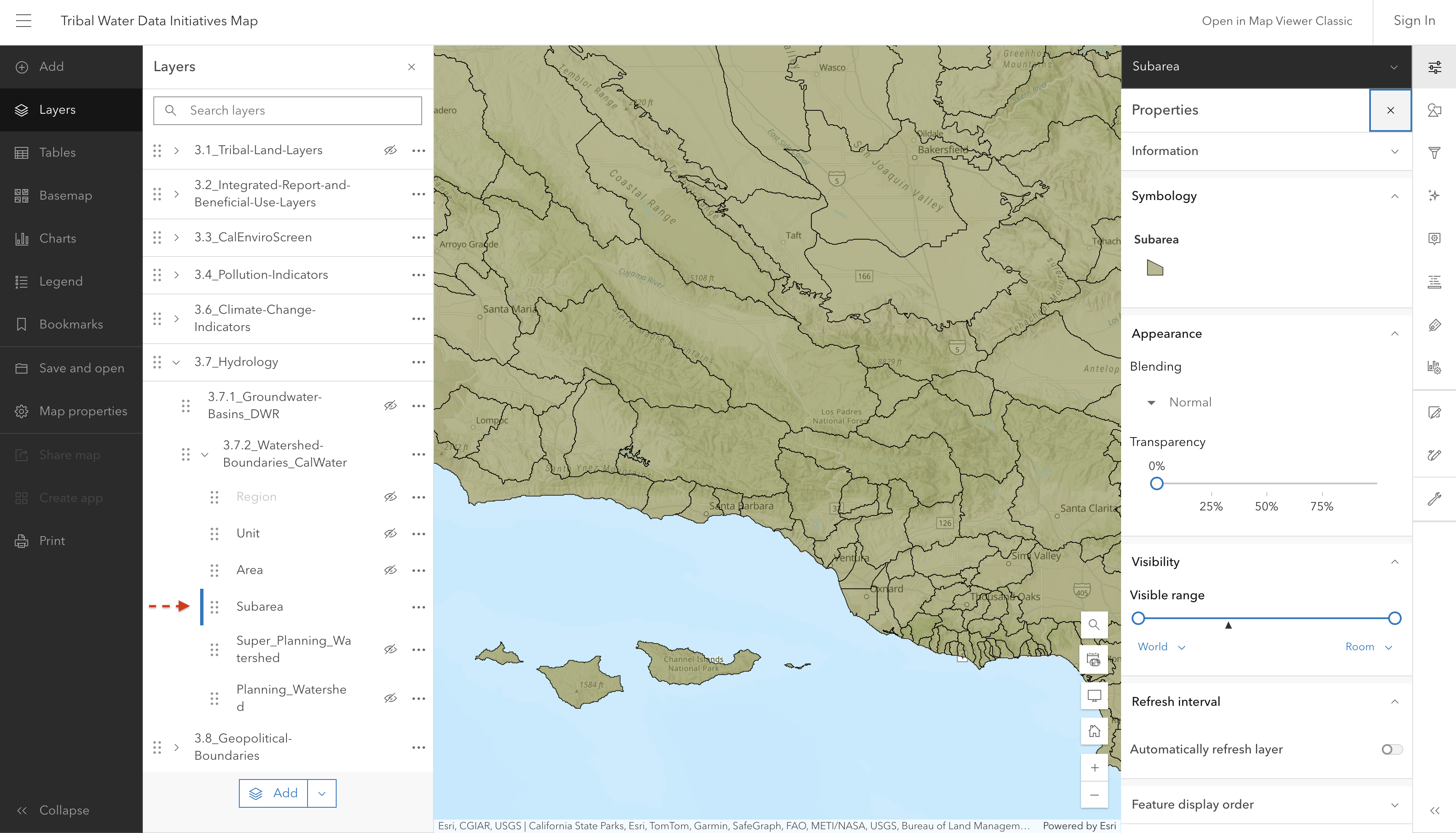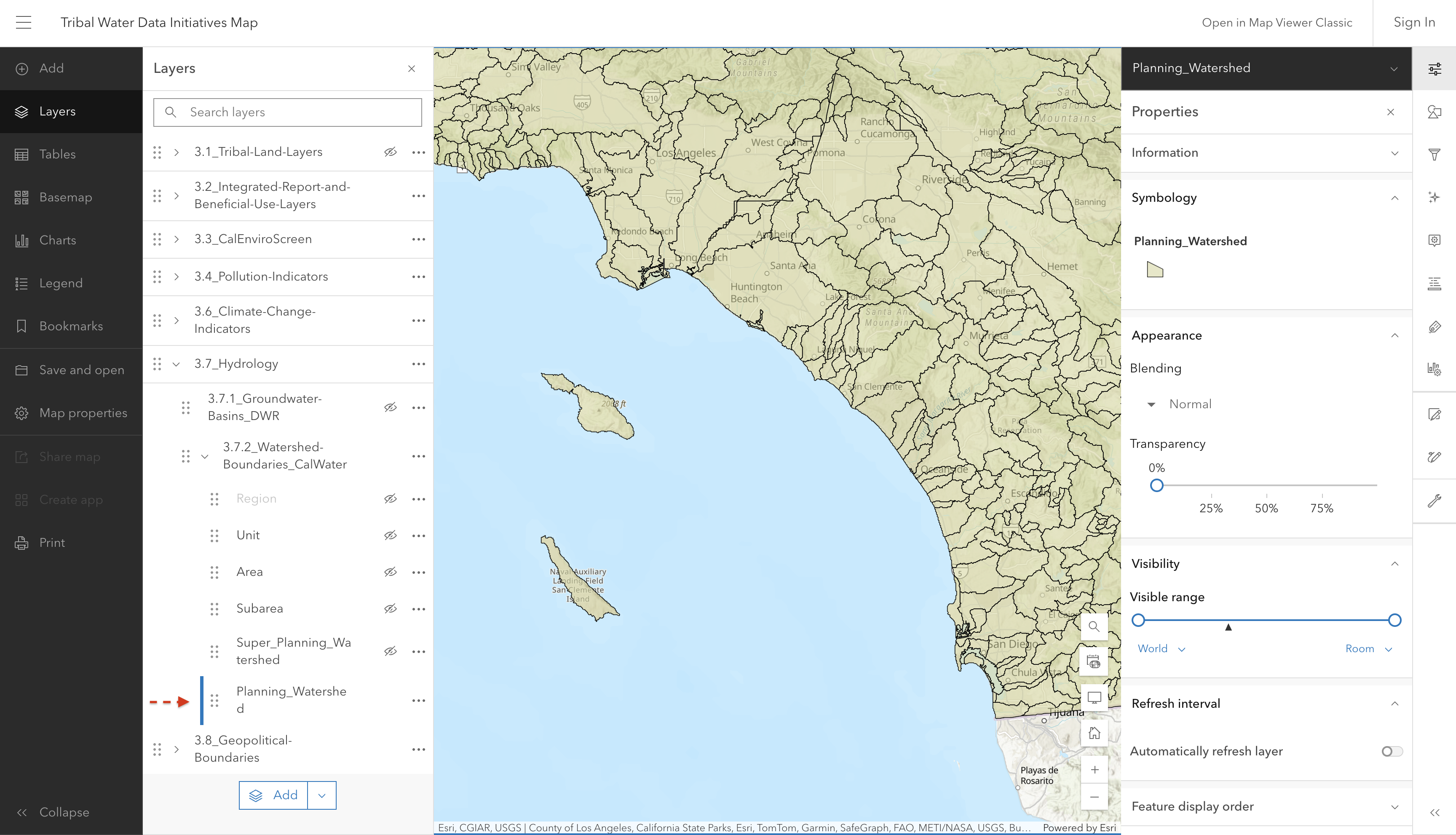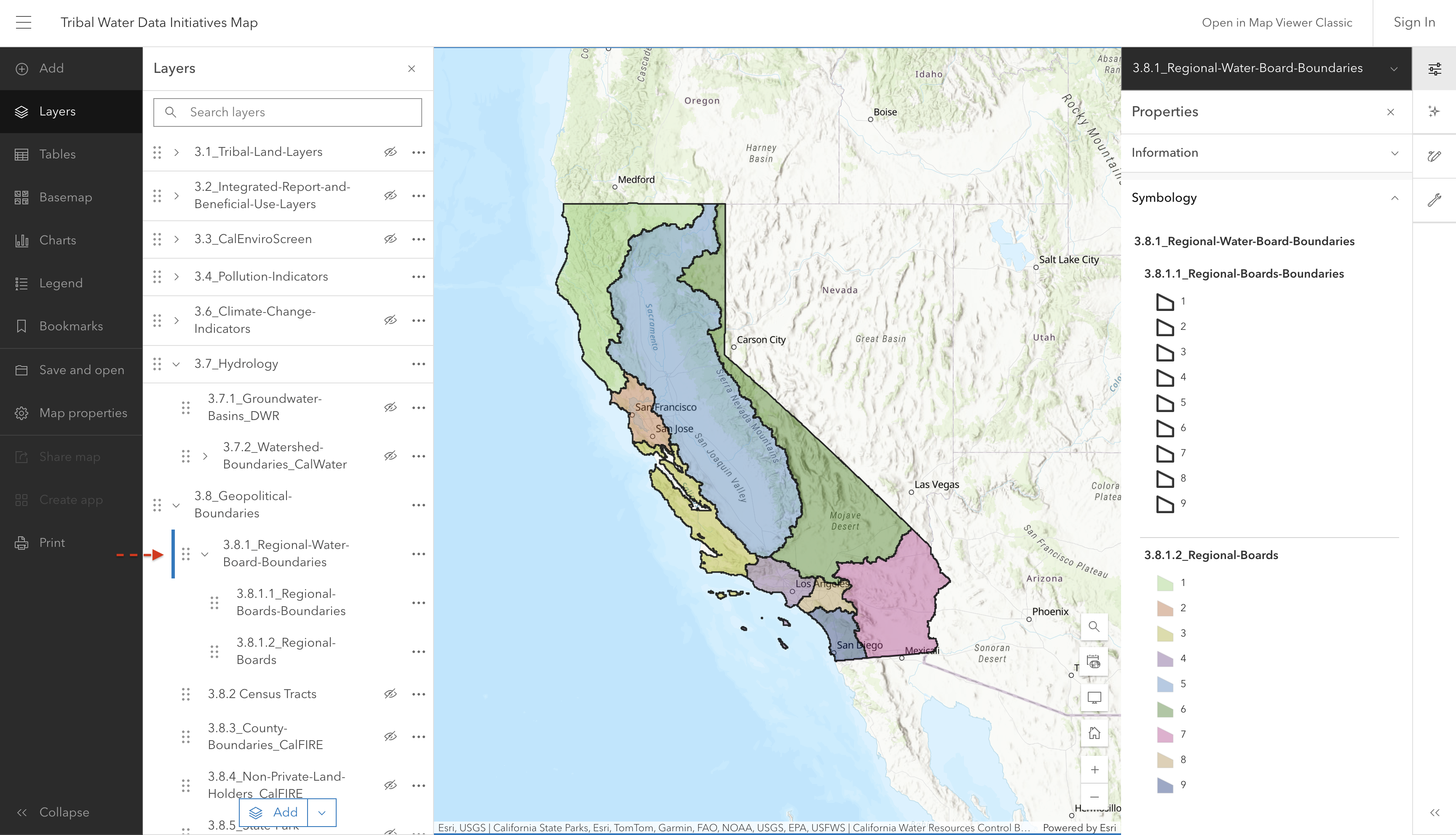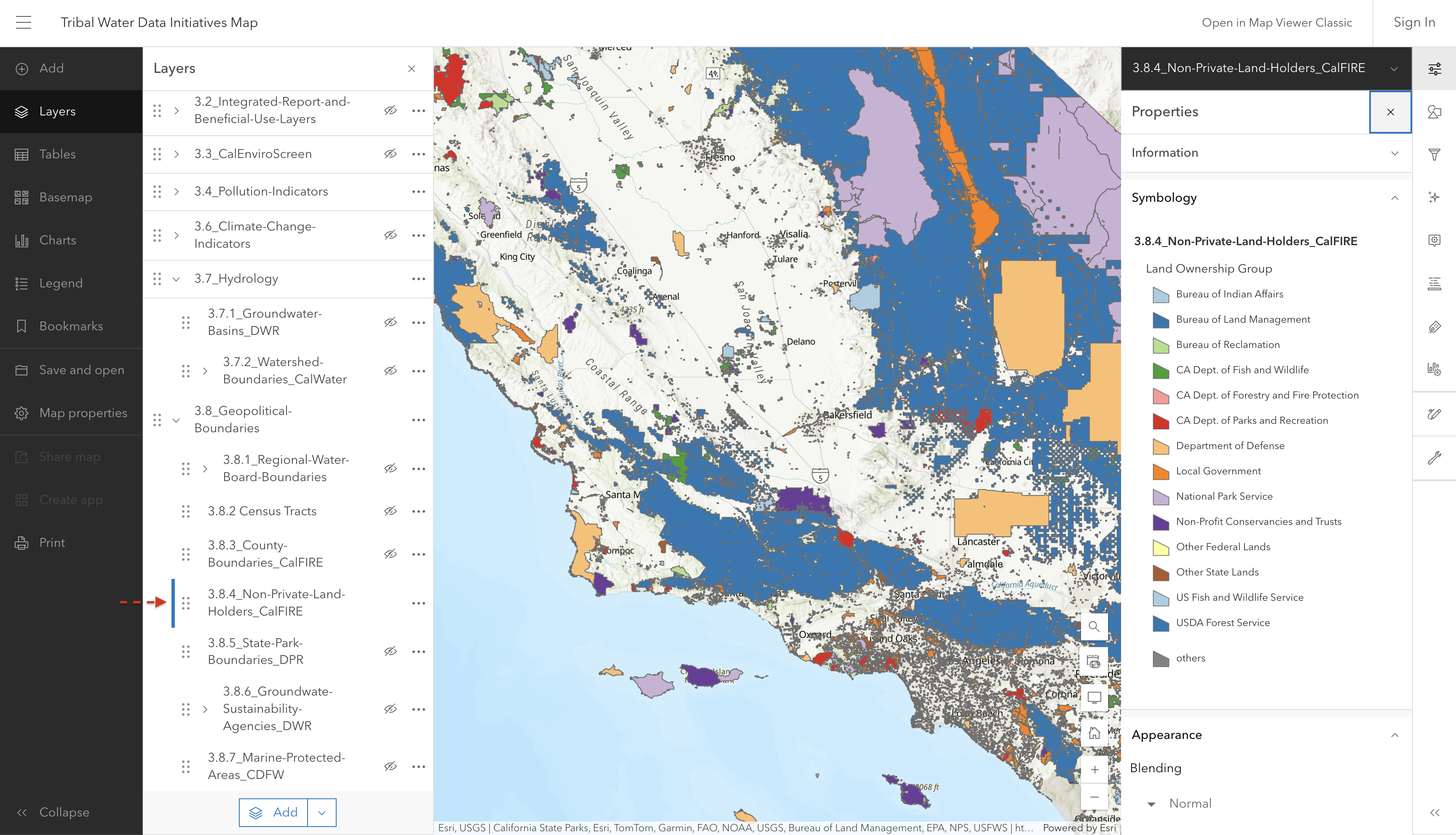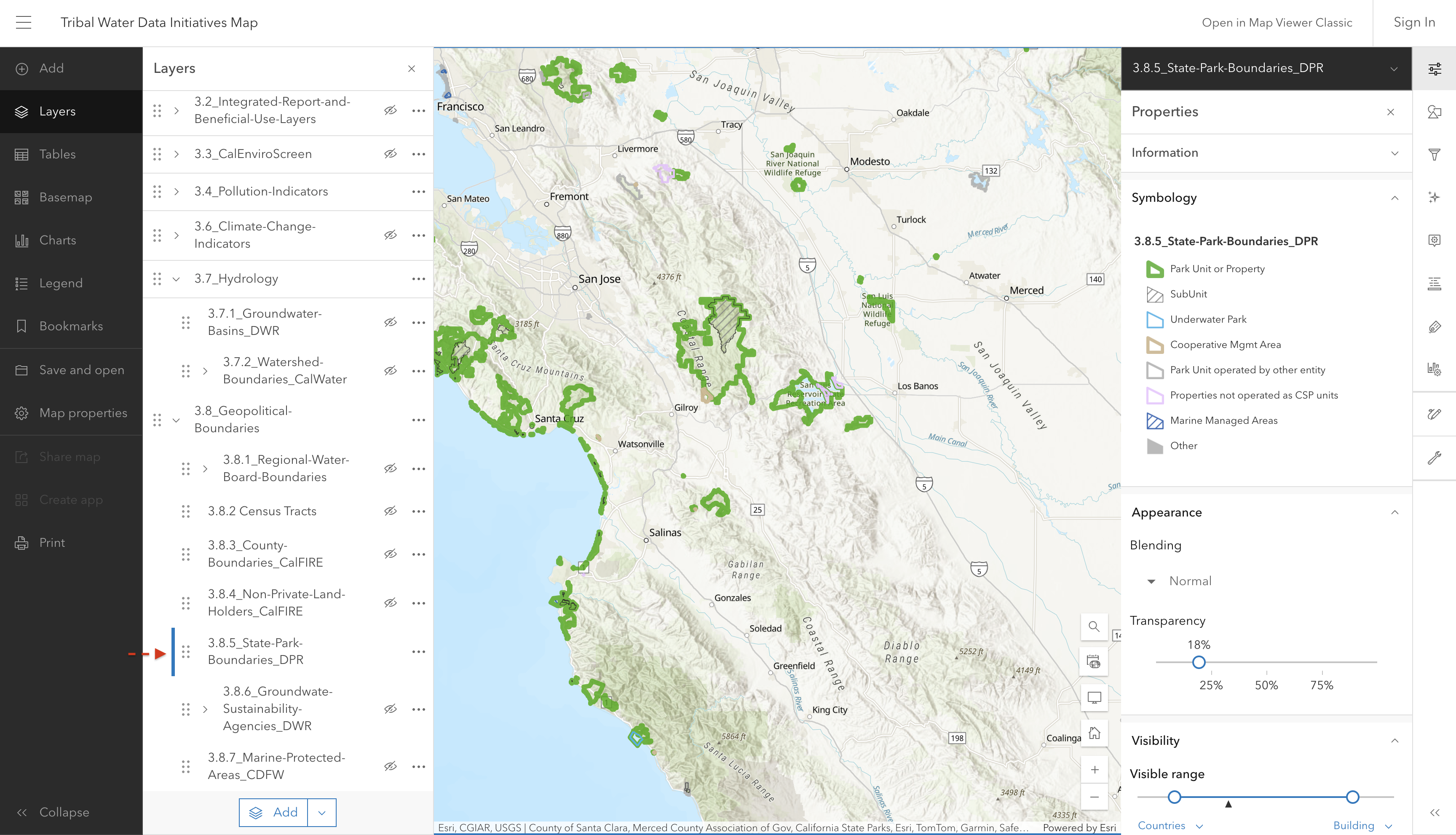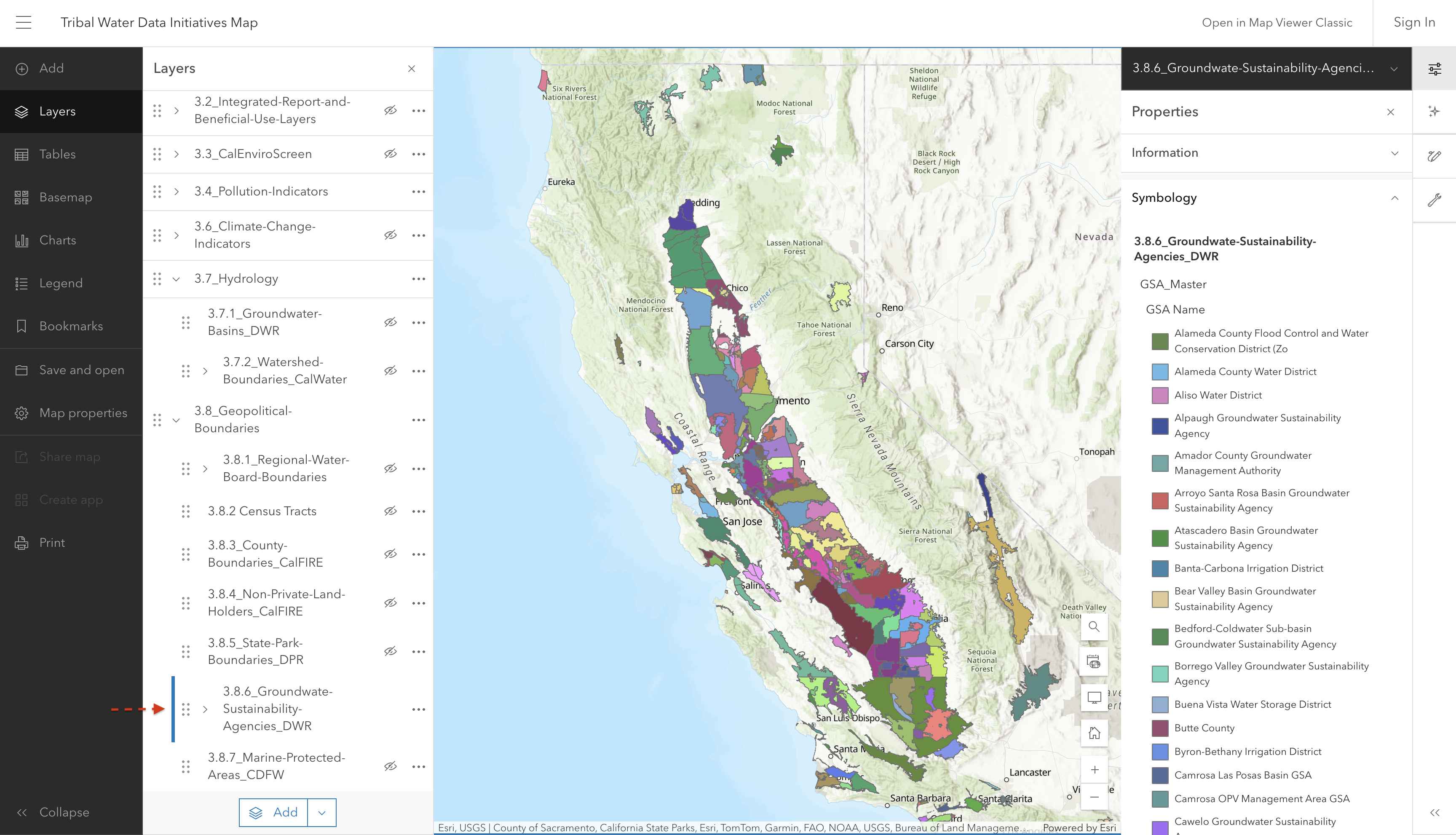The CalEnviroScreen score uses Census Tract information and compares levels of exposure, environmental effects, sensitive populations, and socioeconomic factors across tracts.
OEHHA converts raw data values for each indicator into a percentile to be able to compare results across the state.
After each indicator is assigned a percentage, OEHHA calculates the average of the exposure indicator percentiles and the average of the environmental effect percentiles. These two averages are then combined and divided by 10 to calculate the Pollution Burden score, which ranges from 0-10.
This same process is completed for the Population Characteristics, which combines the averages of the indicators for sensitive populations and socioeconomic factors.
The overall CalEnviroScreen score is calculated by multiplying the pollution burden by the population characteristics, and ranges from 0-100. This method allows scores from across all census tracts in the state to be compared. A higher score means that a tract has greater overall population vulnerability and pollution burdens. A CalEnviroScreen score is calculated for 8,000 Census Tracts.
See Training Module 6 for more information and detailed examples
